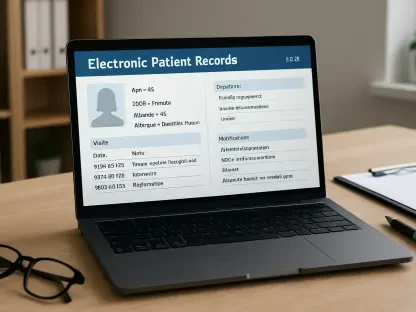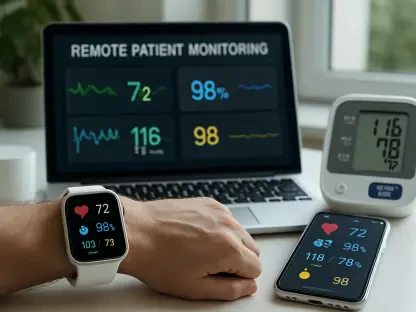In the labyrinth of U.S. healthcare, payment inefficiencies have long been a persistent thorn in the side of providers, payers, and patients alike, draining resources and diverting focus from patient care. Administrative waste accounts for a staggering 25% of healthcare costs, largely due to manual processes, fragmented systems, and delays in claims reconciliation. Providers often wait weeks or even months for payments, grappling with multiple portals and unclear data, while payers struggle with operational bottlenecks that strain partnerships. This systemic chaos erodes trust and inflates costs across the board. Amid this challenge, a groundbreaking solution has emerged through Zelis’s Advanced Payment Platform (ZAPP), which promises to revolutionize the payment landscape by digitizing processes and fostering collaboration. This innovative platform tackles the root causes of inefficiency, offering a glimpse into a future where healthcare stakeholders can prioritize care over paperwork.
Addressing Systemic Inefficiencies in Healthcare Payments
Unpacking the Fragmentation Challenge
The U.S. healthcare payment system is a patchwork of disjointed processes that create bottlenecks at every turn, leaving providers and payers mired in administrative quicksand. Manual handling of claims, inconsistent data access, and the lack of real-time processing mean that providers often face uncertainty about payment timelines, while payers deal with inefficiencies that slow down operations. This fragmentation not only delays cash flow but also fosters mistrust among stakeholders, as disputes over claims and payments become commonplace. The ripple effect is felt by patients, who encounter billing errors or delays in authorizations that complicate their care experience. A significant portion of healthcare spending is consumed by these avoidable inefficiencies, highlighting the urgent need for a streamlined approach. Technology offers a path forward, with platforms like ZAPP stepping in to bridge these gaps by connecting over 550 payers and digitizing transactions to reduce delays and enhance clarity across the system.
The Cost of Administrative Waste
Beyond fragmentation, the sheer cost of administrative waste in healthcare payments is a burden that cannot be ignored, as it diverts critical resources away from patient-focused initiatives. With a quarter of healthcare expenditures tied to back-office tasks, providers are forced to allocate substantial time and staff to troubleshoot payment issues rather than invest in care delivery or organizational growth. Payers, meanwhile, grapple with the operational overhead of managing disparate systems and reconciling claims manually, which often leads to errors and further delays. The financial toll is compounded by the emotional and professional strain on healthcare workers, who find themselves bogged down by paperwork instead of helping patients. Solutions like ZAPP aim to alleviate this burden through automation, consolidating data into a single platform to minimize manual intervention. By reducing the time and cost associated with payment processing, such innovations allow stakeholders to redirect their focus to improving health outcomes and operational efficiency.
The Transformative Power of ZAPP in Healthcare Billing
Streamlining Payments with Digital Innovation
One of the most promising aspects of ZAPP lies in its ability to transform the payment process through seamless digital integration, addressing long-standing delays that have plagued the industry. By connecting hundreds of payers into a unified platform, this technology eliminates the need for providers to navigate multiple portals or endure protracted waiting periods for payments. The automation of back-office tasks ensures that claims are processed with greater speed and accuracy, cutting down on disputes and enhancing cash flow. A striking example of this impact comes from an Arizona-based Integrated Delivery Network, which slashed claim processing times from two months to just two days after implementing ZAPP. This dramatic reduction, coupled with a doubling of electronic payment volumes, underscores how digitized systems can overhaul inefficiencies. Such advancements not only save time but also build trust among stakeholders by providing reliable data and predictable payment cycles.
Enhancing Transparency and Collaboration
Equally critical to ZAPP’s impact is its focus on fostering transparency and collaboration, which are often missing in the current healthcare payment ecosystem. Providers frequently struggle with a lack of clear insights into claim statuses or payment timelines, leading to frustration and operational hiccups. This platform counters that by consolidating data and offering real-time visibility, enabling providers to track transactions and resolve issues proactively. For payers, the system streamlines communication and reduces friction in partnerships, creating a more cohesive network. Patients also stand to benefit, as fewer billing errors and quicker authorizations translate to a smoother experience and better understanding of care costs. While some providers remain hesitant about adopting digital payments due to unfamiliarity or security concerns, ZAPP prioritizes user-friendliness and choice, ensuring that the transition is as seamless as possible. This emphasis on collaboration signals a shift toward a data-driven ecosystem where trust and efficiency take center stage.
Future Horizons for Healthcare Payment Systems
Leveraging AI and Cybersecurity for Progress
Looking ahead, the integration of advanced technologies like artificial intelligence (AI) into platforms such as ZAPP holds immense potential to further refine healthcare payment systems by optimizing decision-making and slashing processing times. The vision is to reduce payment cycles from days to mere hours, a goal that could redefine operational standards in the industry. However, as digitization accelerates, the importance of robust cybersecurity cannot be overstated. Protecting sensitive data and ensuring transparency in algorithms are paramount to maintaining trust among stakeholders. Opaque systems or unchecked vulnerabilities could undermine the very efficiencies that technology seeks to create. Industry leaders stress that future innovations must balance speed with security, providing safeguards against breaches while delivering actionable insights. Platforms like ZAPP are poised to lead this charge, embedding protective measures alongside cutting-edge tools to shape a resilient payment landscape.
Refining the Focus on Care Delivery
Reflecting on the strides made, it becomes clear that the journey to overhaul healthcare payments has shifted from merely addressing inefficiencies to fundamentally realigning priorities toward care delivery. The success of ZAPP in reducing administrative waste and accelerating payment cycles has demonstrated that technology can lift the burden of paperwork from providers’ shoulders. Cases like the Arizona network, where processing times have been drastically cut, illustrate the tangible impact on operational capacity. Beyond compliance with regulatory mandates, the emphasis has grown to include user-centric design and collaborative automation, ensuring that both payers and providers find value in the system. As the industry moves forward, the integration of AI and cybersecurity has emerged as critical next steps to sustain momentum. The path ahead involves continued investment in solutions that prioritize transparency and trust, ensuring that healthcare stakeholders can keep their focus on delivering quality care rather than navigating payment chaos.









